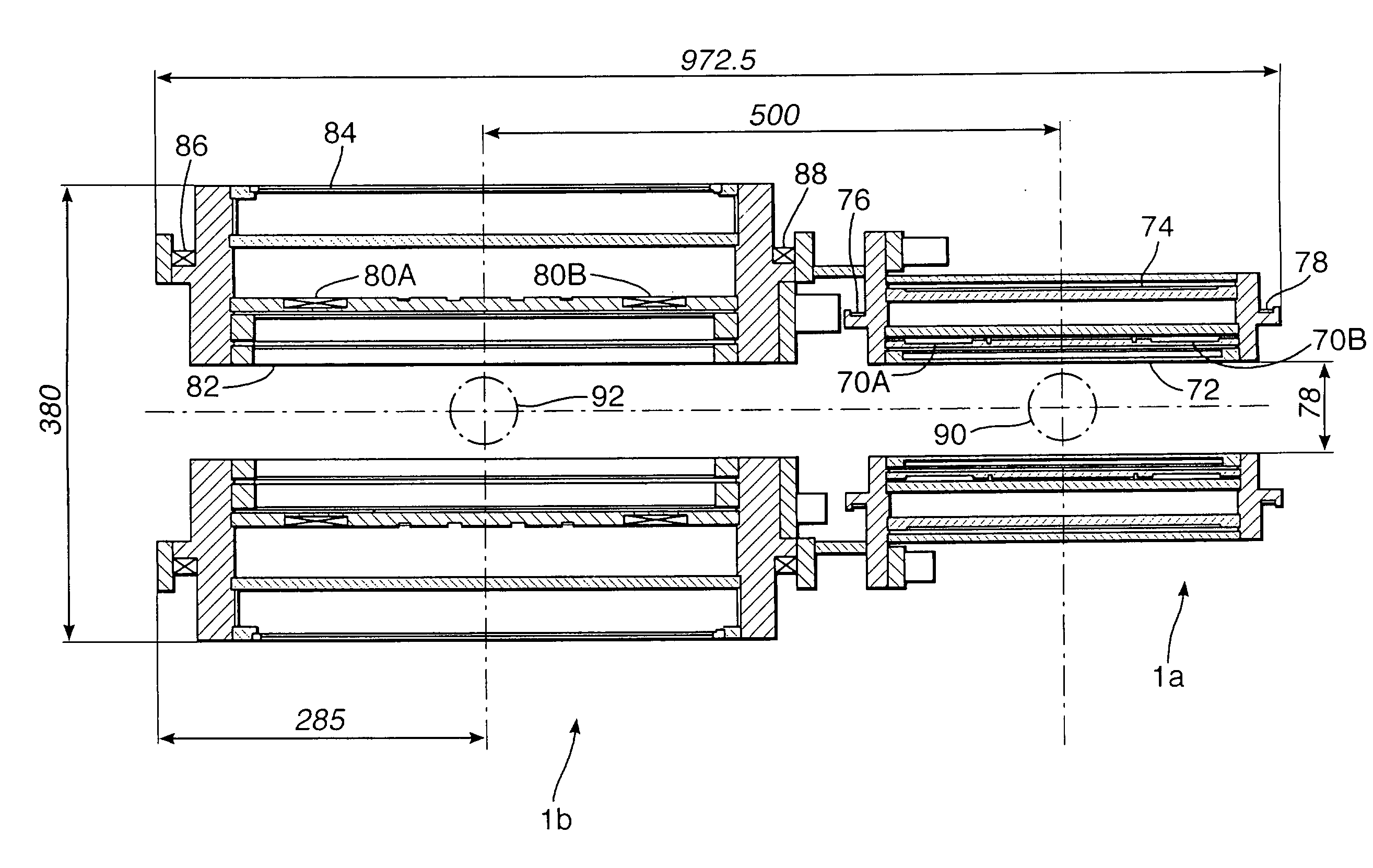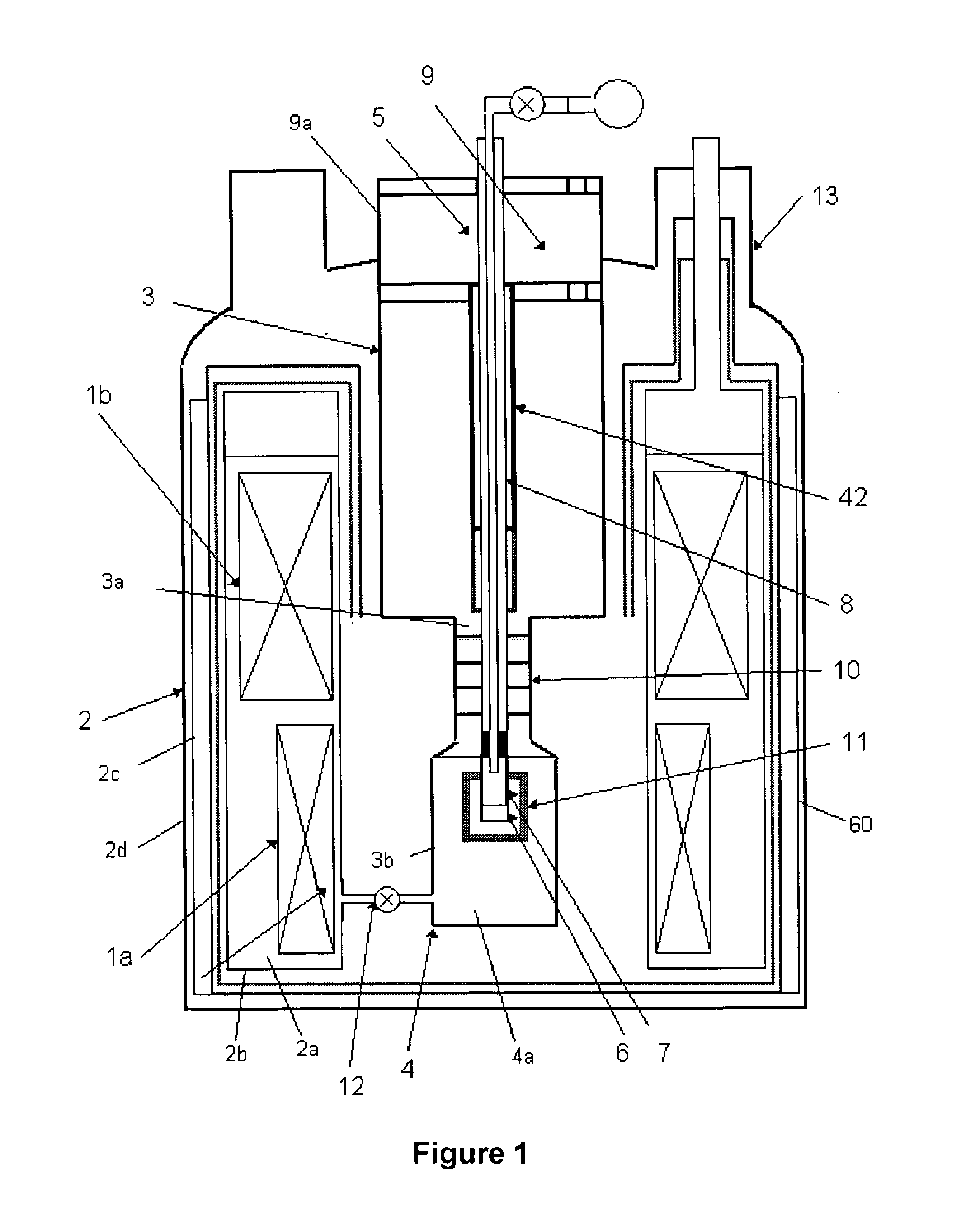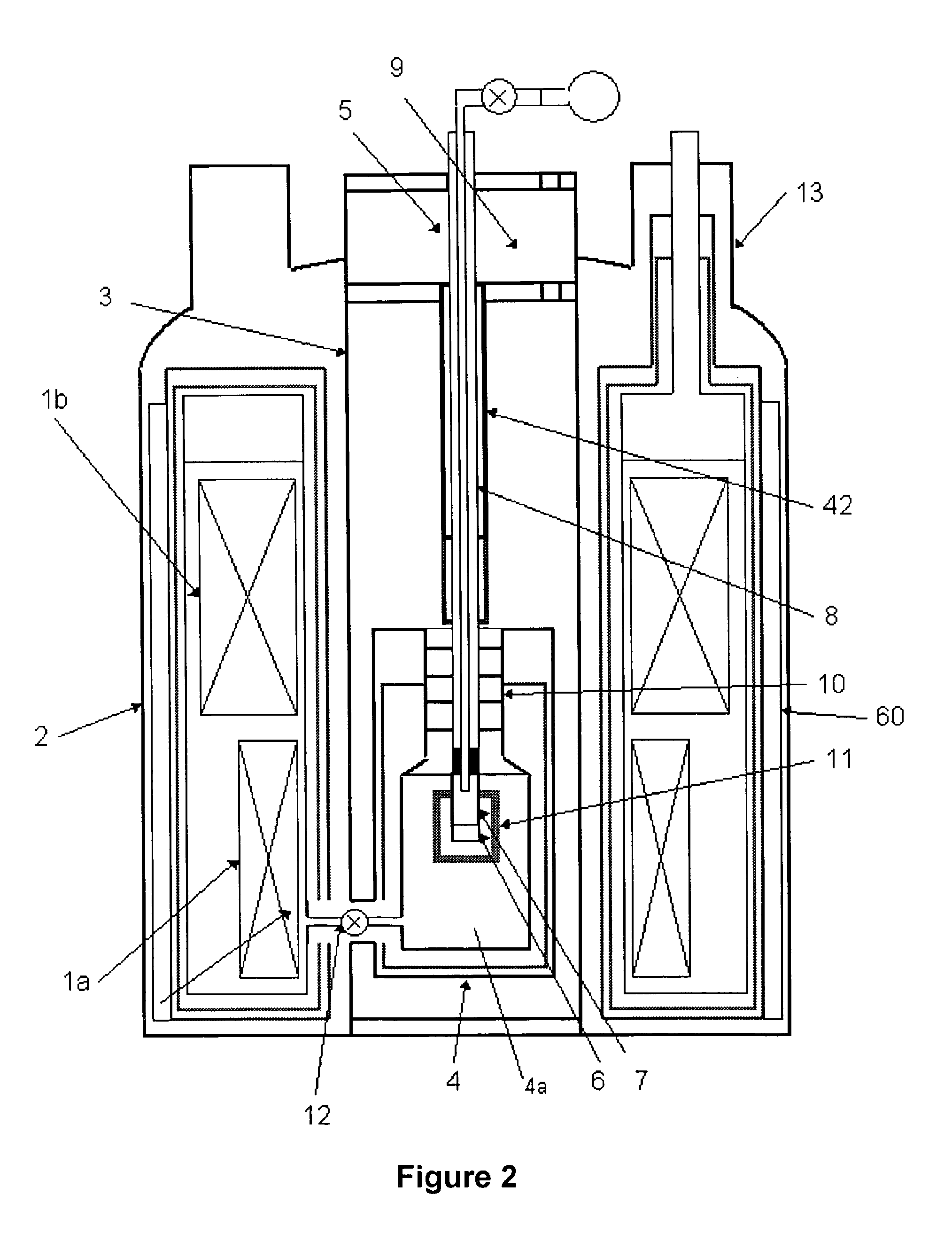Apparatus and method for performing in-vitro DNP-NMR measurements
a technology of in-vitro dnpnmr and apparatus, which is applied in the field of apparatus and methods for performing invitro dnpnmr measurements, can solve the problems of wide commercial application of nmr (nuclear magnetic resonance) spectroscopy that has been somewhat restricted, the inherent low sensitivity of the technique, and exceptionally costly solutions, so as to minimise the loss of polarisation, minimise the reaction force, and reduce the effect of stray or external fring
- Summary
- Abstract
- Description
- Claims
- Application Information
AI Technical Summary
Benefits of technology
Problems solved by technology
Method used
Image
Examples
Embodiment Construction
[0055]Referring to FIG. 1, the combined DNP-NMR apparatus comprises a polarizing magnet 1a, positioned below an NMR magnet 1b, inside a cryostat 2, having a room temperature bore 3 containing an access port 3a to a polarization chamber 4 within a coaxial bore 3b. A sample positioning assembly 5 is located in the bores 3,3b. This comprises a container 7 in which a sample 6 is located, the container being attached to the end of a positioning rod 8. The rod may be moved vertically within the bores to position the sample within the polarization chamber 4, an NMR RF probe 42, or to remove it from the bores into a sample changer apparatus 9. It will be recognised that other orientations of the magnets are possible.
[0056]The cryostat 2 is of conventional form and has an inner Helium can 2a surrounded by a radiation shield 2b, a nitrogen can 2c and an outer vacuum wall 2d.
[0057]When the sample is in the polarization chamber 4 it is immersed in liquid helium 4a. The polarization chamber has...
PUM
 Login to View More
Login to View More Abstract
Description
Claims
Application Information
 Login to View More
Login to View More - R&D
- Intellectual Property
- Life Sciences
- Materials
- Tech Scout
- Unparalleled Data Quality
- Higher Quality Content
- 60% Fewer Hallucinations
Browse by: Latest US Patents, China's latest patents, Technical Efficacy Thesaurus, Application Domain, Technology Topic, Popular Technical Reports.
© 2025 PatSnap. All rights reserved.Legal|Privacy policy|Modern Slavery Act Transparency Statement|Sitemap|About US| Contact US: help@patsnap.com



